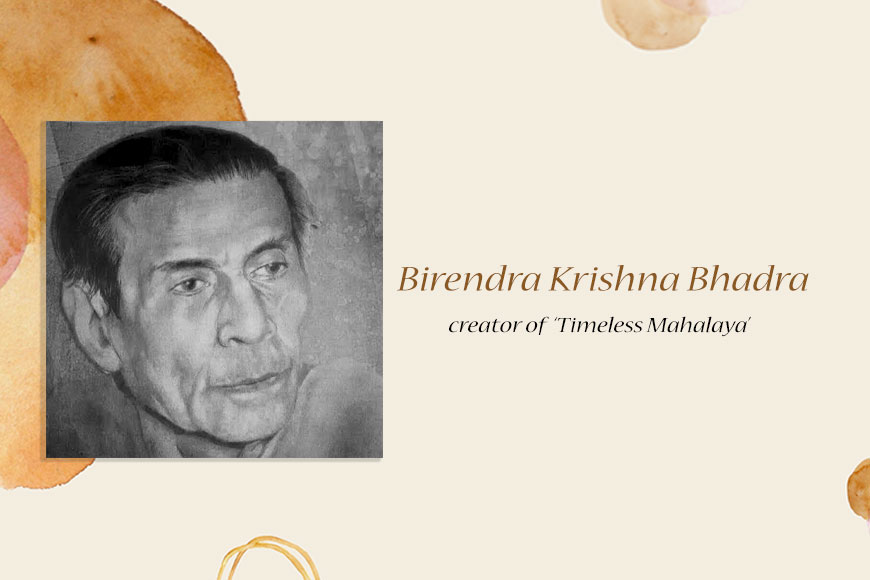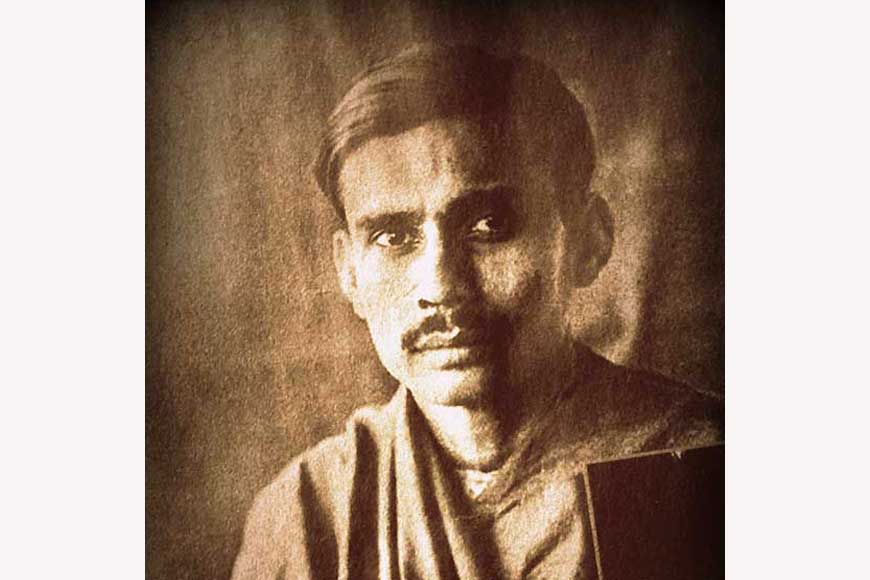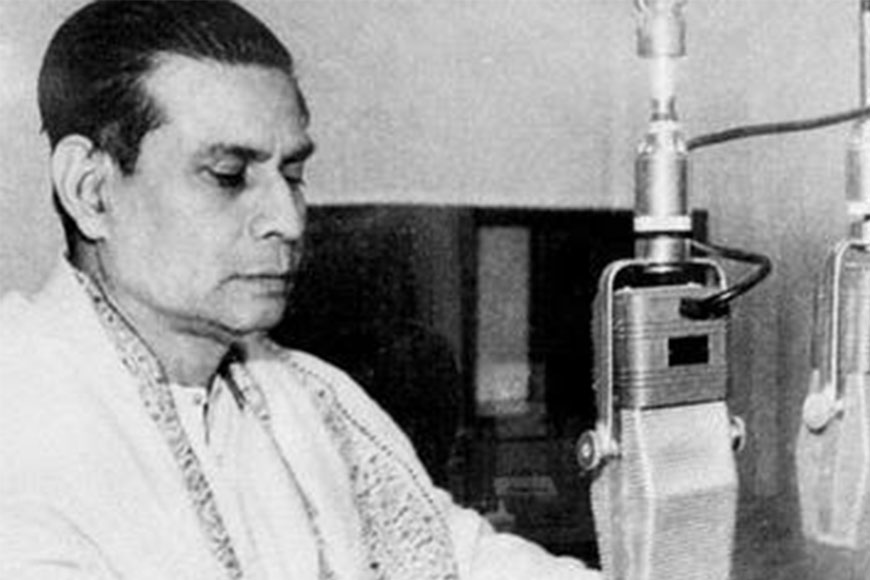Birendra Krishna Bhadra – creator of ‘Timeless Mahalaya’

Calcutta in the early 1930s was thriving to grow. In 1931 a casual brainstorming session on new programmes for All India Radio resulted in a rough outline of what is now known as Mahalaya, worked out with AIR programme director Nripen Majumdar.
This was Calcutta of the gas-lit era when sometime after midnight, every first new moon night of autumn, a bevy of cars would disperse across the city, scurrying through its mysteriously semi-lit roads before disappearing into the depths of darkness. One of them would turn up in a by-lane in north Kolkata’s Shyampukur neighbourhood and patiently await its passenger.
Despite his identity as the voice of Mahalaya, Bhadra in personal life was never an overtly religious person. A clerk in the Indian Railways in his late twenties – who also doubled up as an amateur playwright – would eventually step into the sedan and be whisked a few kilometres away to the local headquarters of All India Radio (AIR), the state broadcaster. The man would join another 30 odd friends and colleagues at the AIR studio – each a legend of contemporary music in Kolkata and India at the time – in last-minute voice rehearsals and final tuning of musical instruments.
 A rare photo of Birendra Krishna Bhadra in his early days
A rare photo of Birendra Krishna Bhadra in his early days
Everyone – including the vast assembly of orchestra musicians of every faith – would be impeccably dressed – men in starched white dhotis and women in crisp red and white sarees. It was also a custom for the entire team to take a bath before settling down. Then, sharp at the stroke of 4am, it would begin. First, the billowing conch. Followed by a short chorus in Sanskrit.
And then Birendra Krishna Bhadra would join the assortment of classical singers with his booming baritone, beginning the first cantata of a live musical journey with words that have since come to herald the biggest festive season in the eastern Indian state of Bengal and beyond: “Ashwiner Sharad Prate Beje Utheche Alokomonjir…. (What brilliant light bursts forth this autumn morning, what veil of clouds adorns the skies…)”.
The 85-minute extravaganza that Bhadra and his ensemble produced, called ‘Mahishasur Mordini ‘(The Slaying of the Demon), remains a timeless combination of narration, orchestra, chorus and Sanskrit hymns that describe the Hindu Goddess Durga’s creation and her quest to destroy a buffalo demon king (Mahishasur), who has unleashed unspeakable horror upon earth.
Thanks to the magic of Bhadra’s voice, it has traversed beyond the realm of scriptures to become a social and cultural landmark. Translated and simultaneously broadcast in Hindi across India every year, the recital’s underlying message of the triumph of good over evil also resonates with a global audience.
Part ballad, part oratorio and fully uplifting, Mahalaya has for the past 89 years galvanized millions of listeners – most of them either gathered around the crackling radio or cocooned in bed – as embalmed darkness would slowly dissolve into dawn outside. For more than 30 years since its inception, Mahalaya was a live programme broadcast from the AIR studios in Kolkata – it was only in 1966 that it moved to a pre-recorded format.
The public appeal of the programme was so strong that in 1976, when AIR deployed Bengali film icon Uttam Kumar alongside legendary singers Lata Mangeshkar, Asha Bhonsle and Hemanta Mukherjee to replace the original version of Mahalaya, there was a massive outrage verging on state-wide rebellion. The then Indian information minister LK Advani was eventually forced to issue a public retraction and reinstate Bhadra’s version in 1977.
Since then, generations have passed, but the tradition has endured: to paraphrase Shakespeare, it seems that age cannot wither Mahalaya nor repetition stale its infinite variety. On the contrary, it continues to attract a wide band of new audiences – from the deeply devout to the utterly non-religious – for whom it has become an enduring gateway to the festive season.
Many would not even follow the meaning of the classical Bengali words or the complex Sanskrit hymns enunciated through the songs or the recitations, but its essence as captured by the sonorous voice of the narrator would trigger a sense of collective nostalgia, an impulsive bond with the immense edifice of memory that connects all humanity.
 Birendra Krishna Bhadra
Birendra Krishna Bhadra
And Birendra Krishna Bhadra is the epitome of that nostalgia.
Born in 1905 into a family of linguists and lawyers in north Kolkata, Bhadra graduated in 1928 from Scottish Church College. His father Kali Krishna Bhadra could speak 14 languages and was awarded the title “Roy Bahadur” by the British rulers of India in 1927.
Apart from Mahalaya, Bhadra also became the popular voice for live radio commentaries on the final journey of public personalities such as Rabindranath Tagore. But while Bhadra’s voice made him one of the most popular figures of radio in Bengal for more than 50 years, public fame never translated into material affluence.
The voice which so fervently ushered in the season of festivities was conveniently relegated once the celebrations were over. Bhadra was never entitled to pension after he retired in 1970. A typical contract job with AIR about a couple of times a month would fetch him the princely sum of Rs75. While Bhadra, who died in relative obscurity in 1991, might not have reaped any financial reward or social recognition for his mesmerizing masterpiece, his Mahalaya remains an epic and timeless experience that has transcended all social and even religious barriers: as a heartfelt narrative of the triumph of hope over despair, of the victory of humanity over hardship, it will resonate for generations to come.









